Your Next Quilting Project: How To Choose?
Choosing your next quilting project can feel like standing in front of a vast ocean of fabric and patterns, each wave promising something new and exciting. But how do you dive in without feeling overwhelmed? This article will guide you through the essential factors to consider when selecting your next quilting project, ensuring you find the perfect fit for your skills and interests. Whether you're a seasoned quilter or just starting, the right project can ignite your creativity and bring joy to your crafting journey.
Before you pick up your rotary cutter, take a moment to assess your quilting skills. Are you a beginner, an intermediate, or an advanced quilter? Understanding where you stand is crucial in selecting a project that won't leave you frustrated or bored. If you're just starting out, you might want to stick to simpler patterns that allow you to practice basic techniques like piecing and quilting. On the other hand, if you have a few projects under your belt, you might be ready to tackle something more intricate, perhaps incorporating techniques like appliqué or paper piecing. Remember, the goal is to challenge yourself without stepping too far outside your comfort zone.
Now that you've assessed your skills, it’s time to talk about one of the most exciting parts of quilting: fabric selection! The fabric you choose can truly make or break your project. Think of it as the paint on a canvas; it sets the mood and brings your design to life. You'll want to consider different fabric types, their qualities, and how they align with your chosen design and personal style. For instance, cotton is a popular choice for quilting due to its durability and ease of handling, while flannel can add a cozy feel to your quilts. Specialty fabrics, like batiks or silks, can bring a unique touch but may require more skill to work with.
Each type of fabric has its unique properties and best uses. Here’s a quick rundown:
| Fabric Type | Best Uses |
|---|---|
| Cotton | General quilting, easy to work with |
| Flannel | Warm quilts, cozy throws |
| Batik | Intricate designs, vibrant colors |
| Silk | Elegant quilts, special occasions |
Understanding color theory can elevate your quilting designs from ordinary to extraordinary. It’s like learning to play with a full palette of emotions! Consider how colors interact with each other, and don't shy away from experimenting with combinations that excite you. You might opt for complementary colors for a bold look or analogous colors for something more harmonious. Whichever route you choose, ensure that your color palette reflects your personal style and the story you want your quilt to tell.
When it comes to fabric selection, another big decision is whether to go for prints or solids. Both have their pros and cons, and the choice can significantly affect your quilt's overall appearance. Prints can add visual interest and complexity, making a quilt look busy and lively. However, too many prints can clash, creating a chaotic look. On the other hand, solid fabrics provide a clean, modern aesthetic and can help highlight intricate piecing. Think about the message you want your quilt to convey and choose accordingly!
Before you dive into your project, ensure you have the right tools at your disposal. Having the right equipment can make your quilting experience smoother and more enjoyable. Essential tools include:
- Rotary cutter
- Cutting mat
- Quilting ruler
- Sewing machine
- Pinning supplies
Investing in quality tools will not only improve your efficiency but also enhance the overall quality of your work.
Understanding the complexity of a project is vital for managing your time effectively. Take a realistic look at your schedule and how much time you can dedicate to quilting. If you have a busy week ahead, you might want to stick to a smaller project or a pattern you've mastered. On the flip side, if you have a long weekend coming up, it could be the perfect opportunity to tackle that intricate quilt you've been dreaming about!
Effective time management can enhance your quilting experience. Here are some strategies to help you allocate time wisely:
- Set specific goals for each sewing session.
- Create a timeline for larger projects, breaking them into smaller tasks.
- Use a calendar or planner to keep track of your progress.
If you decide to take on a complex project, don’t let it intimidate you! Break it down into manageable steps. For instance, focus on completing one block at a time rather than trying to finish the entire quilt in one go. This approach not only makes the process less overwhelming but also allows you to celebrate small victories along the way.
Inspiration can come from various sources, and it’s essential to keep your creative juices flowing. Whether it’s flipping through quilting magazines, browsing online platforms, or chatting with fellow quilters, there’s a world of ideas waiting for you. Don’t hesitate to explore different styles and techniques; you never know what might spark your next project!
The internet is a treasure trove of quilting inspiration. Websites, social media groups, and forums are fantastic places to connect with other quilters, share your work, and gather new ideas. Platforms like Pinterest and Instagram can provide endless visual inspiration, while quilting blogs often offer tutorials and tips that can help you refine your skills.
Books and magazines can provide valuable insights and inspiration. Some must-read quilting literature includes classic quilting guides, pattern books, and contemporary quilting magazines that showcase the latest trends and techniques. These resources not only spark your creativity but also help you deepen your understanding of the craft.
Q: What is the best fabric for beginners?
A: Cotton is generally the best choice for beginners due to its ease of use and availability.
Q: How do I know if a project is too complex for my skill level?
A: If you feel intimidated just looking at the pattern, it might be best to start with a simpler project and build your skills.
Q: Where can I find quilting inspiration?
A: Online platforms like Pinterest, Instagram, and quilting blogs are great places to find inspiration. Don't forget about local quilting groups and classes!
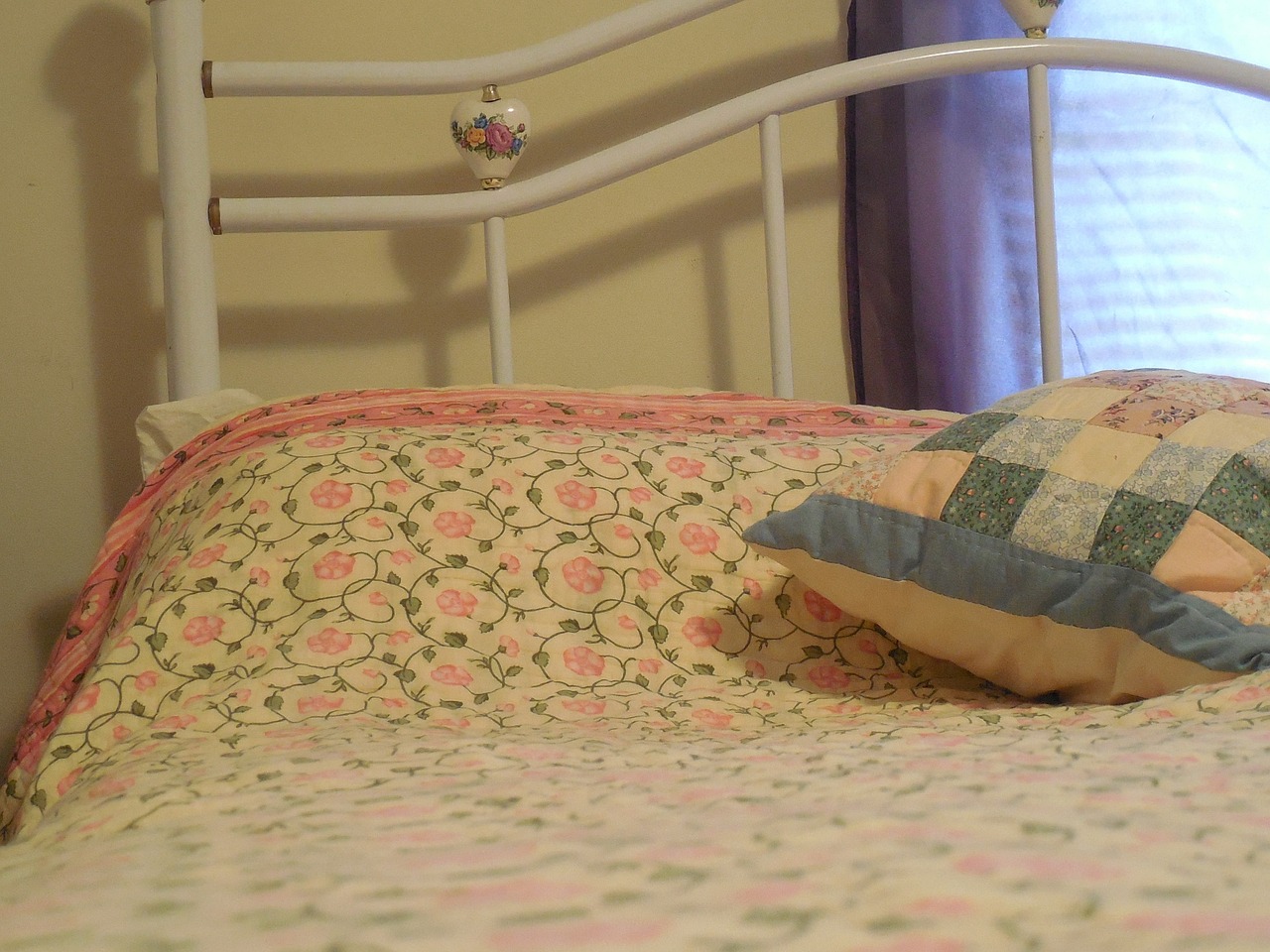
Understanding Your Skill Level
Assessing your quilting skills is crucial before diving into your next project. Just like a chef wouldn’t attempt a soufflé without mastering the basics of cooking, you shouldn’t jump into complex quilting patterns without a solid understanding of your current skill level. So, how do you gauge where you stand? Let’s break it down!
First, consider your experience. Have you just started dabbling in quilting, or are you a seasoned pro? If you’re new to the craft, it’s wise to start with beginner-friendly projects that allow you to familiarize yourself with the tools and techniques without feeling overwhelmed. Think of simple patchwork quilts or basic squares that can help you build confidence. On the other hand, if you’ve been quilting for a while, you might be ready to tackle more intricate designs that challenge your skills.
Next, reflect on your comfort level with various quilting techniques. Are you comfortable with sewing curves, or do you prefer straight lines? Do you know how to handle different fabric types? Understanding your strengths and weaknesses will help you select a project that not only excites you but also aligns with your current abilities. Here’s a quick overview:
| Skill Level | Project Suggestions | Techniques to Master |
|---|---|---|
| Beginner | Simple patchwork, table runners | Basic sewing, cutting, and piecing |
| Intermediate | Lap quilts, intricate patterns | Curved piecing, basic quilting techniques |
| Advanced | Complex designs, art quilts | Free-motion quilting, advanced pattern drafting |
Lastly, don’t forget to consider how much time you can dedicate to quilting. If you’re juggling a busy schedule, it might be best to choose projects that are not overly complex, allowing you to work at a comfortable pace. Remember, quilting should be a joyful experience, not a source of stress!
In summary, understanding your skill level is about more than just knowing how to sew. It’s about recognizing your experience, comfort with techniques, and available time. By taking these factors into account, you’ll be well on your way to selecting a quilting project that not only fits your current abilities but also pushes you to grow as a quilter. So, what will you choose for your next adventure?
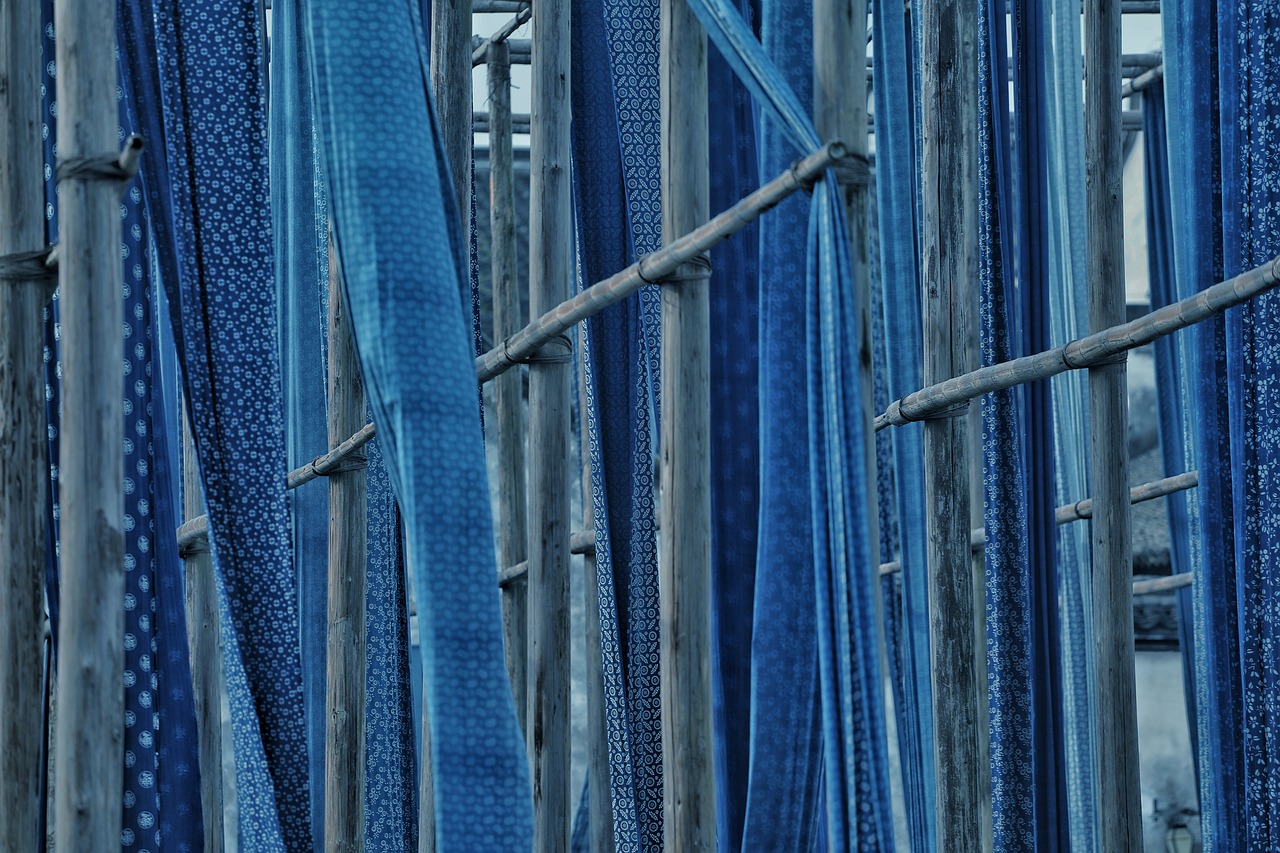
Choosing the Right Fabric
When it comes to quilting, the fabric you choose can truly make or break your project. Imagine crafting a beautiful quilt only to have it fall flat because of the wrong fabric selection. It's like baking a cake without sugar—sure, it might look good, but the taste will leave much to be desired! Therefore, understanding the different types of fabric available and how they can affect your quilting project is essential.
Quilters often gravitate towards cotton fabric, and for good reason. Cotton is not only durable but also easy to work with, making it a favorite among quilters of all skill levels. It comes in a vast array of colors and prints, allowing you to express your creativity freely. However, you might also want to consider other options such as flannel or specialty fabrics, depending on the effect you want to achieve. For instance, flannel adds a cozy, warm touch, making it perfect for winter quilts. Specialty fabrics, like batiks or silks, can provide unique textures and colors but may require more skill to handle.
| Fabric Type | Characteristics | Best Uses |
|---|---|---|
| Cotton | Durable, easy to sew, wide variety | General quilting, piecing |
| Flannel | Soft, warm, cozy | Winter quilts, baby quilts |
| Specialty Fabrics | Unique textures, may require special care | Art quilts, unique projects |
Now, let’s dive into the world of color! Understanding color theory can significantly enhance your quilting designs. You want your quilt to pop, right? Well, choosing a color palette that complements your fabric selection is crucial. Think about color combinations that create harmony and contrast. For example, pairing soft pastels with bold, vibrant colors can create a stunning visual effect. Don't be afraid to experiment! Sometimes, the most unexpected combinations yield the most beautiful results.
Another critical decision is whether to go for prints or solid fabrics. Each option has its own set of pros and cons. Solid fabrics can provide a clean, modern look and allow your quilting techniques to shine. On the other hand, prints can add depth and interest to your project. It's like choosing between a classic black dress or a floral-patterned one—both can be beautiful, but the vibe they give off is entirely different. Think about the overall look you want to achieve and choose accordingly.
As you embark on your fabric selection journey, keep in mind the importance of personal style. Your quilt is a reflection of you, so choose fabrics that resonate with your aesthetic. Whether you prefer bold, bright colors or soft, muted tones, let your personality shine through in your choices. In the end, the right fabric is not just about functionality; it’s about creating something that you love and that brings joy to your quilting experience.

Fabric Types and Their Uses
When it comes to quilting, the fabric you choose can be the difference between a project that sings and one that falls flat. Understanding the various types of fabrics available and their specific uses is essential for any quilter, whether you're just starting out or you're a seasoned pro. Let's dive into some of the most popular fabric types and explore how each one can contribute to your quilting projects.
Cotton is the quintessential quilting fabric. It’s versatile, easy to work with, and comes in a dizzying array of colors and patterns. Cotton fabrics are durable and can withstand the rigors of washing, making them ideal for quilts that will see regular use. They're perfect for everything from traditional patchwork quilts to modern designs. When selecting cotton, look for a high thread count for a softer feel and better durability.
Flannel is another favorite among quilters, especially for cozy quilts. Its soft, fuzzy texture makes it a great choice for blankets meant for warmth and comfort. Flannel is typically heavier than cotton, which can add a nice weight to your quilt. However, it’s important to pre-wash flannel before using it, as it can shrink more than cotton during the washing process. This fabric works wonderfully for baby quilts or winter-themed projects.
For those looking to add a touch of luxury, specialty fabrics such as silk or linen can elevate your quilting game. Silk, while more challenging to work with, offers a stunning sheen and drape that can make your quilt truly stand out. Linen, on the other hand, boasts a unique texture and breathability, making it suitable for quilts that are meant to be lightweight. However, these fabrics may require different sewing techniques and care, so it's essential to do your research before diving in.
Here’s a quick comparison table of the fabric types mentioned:
| Fabric Type | Characteristics | Best Uses |
|---|---|---|
| Cotton | Durable, versatile, available in many patterns | Patchwork quilts, modern designs |
| Flannel | Soft, fuzzy, heavier | Cozy quilts, baby quilts |
| Specialty Fabrics | Luxurious, unique textures | High-end quilts, decorative projects |
When choosing your fabric, consider not just the look but also the feel and purpose of your quilt. Are you making a quilt for a child who will use it daily? Then cotton or flannel might be your best bet. Are you creating a stunning wall hanging for display? Specialty fabrics could add the wow factor you're looking for. Remember, the fabric you select sets the tone for your entire project, so take your time and choose wisely!
Ultimately, the fabric you choose should resonate with your personal style and the story you want your quilt to tell. So, the next time you're at the fabric store, take a moment to explore the various options available to you. You might just find the perfect fabric that inspires your next quilting masterpiece!
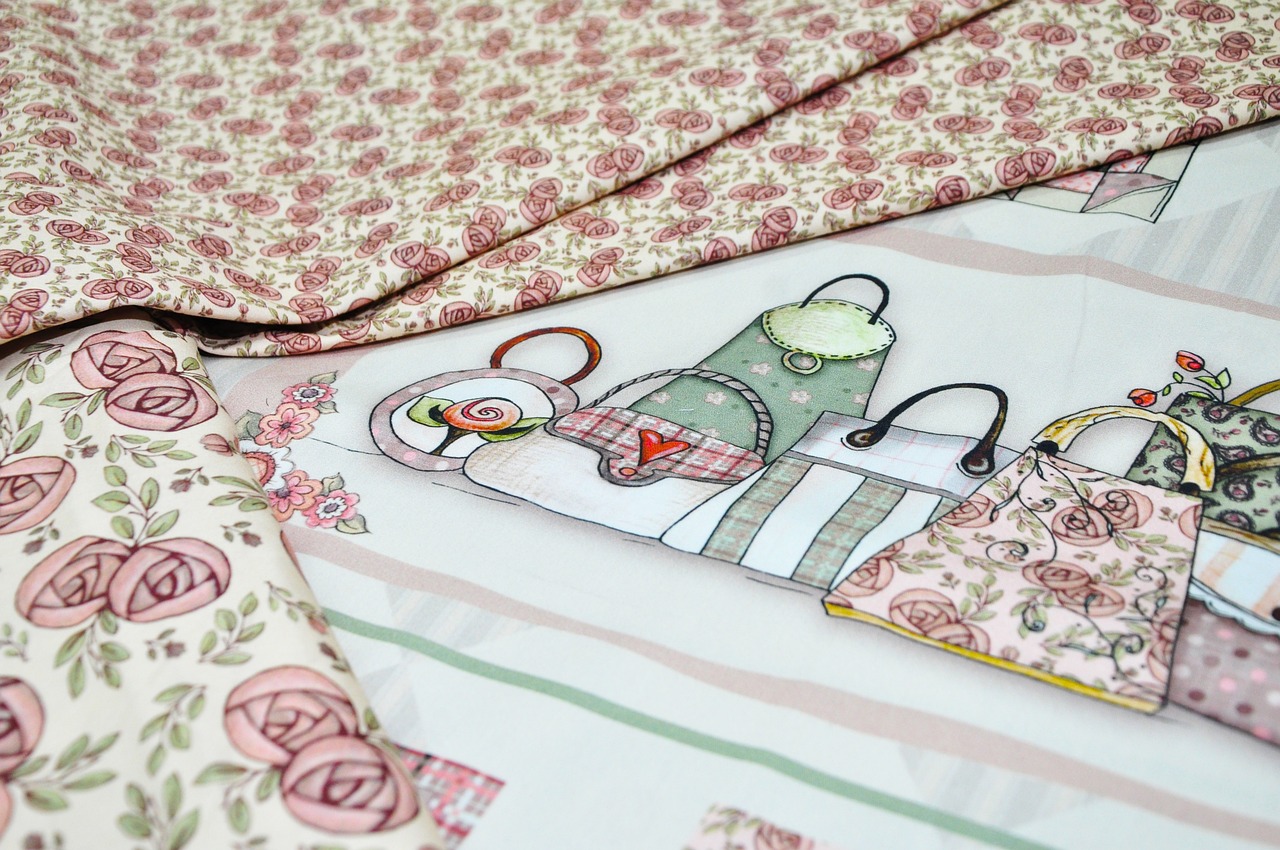
Color Theory in Quilting
When it comes to quilting, color theory plays an essential role in transforming a simple quilt into a stunning masterpiece. Just like an artist chooses their palette, a quilter must understand how colors interact with one another to create a harmonious design. Have you ever gazed at a quilt and felt an emotional response? That’s the magic of color at work!
To get started, let’s break down some fundamental concepts of color theory that every quilter should know. The color wheel is your best friend in this journey. It consists of primary colors (red, blue, yellow), secondary colors (green, orange, purple), and tertiary colors, which are made by mixing primary and secondary colors. Understanding how these colors work together will help you create visually appealing quilts.
One of the key aspects of color theory is complementary colors. These are colors that are opposite each other on the color wheel. For instance, blue and orange or red and green. Using complementary colors can create a striking contrast that draws the eye. On the flip side, you might want to explore analogous colors, which sit next to each other on the wheel, like blue, blue-green, and green. This combination tends to create a more soothing and cohesive look.
Another important element to consider is color value, which refers to how light or dark a color is. By mixing light and dark shades in your quilt, you can add depth and interest to your design. Think of it as creating a landscape; the mountains in the background might be a lighter shade while the foreground features darker, more vibrant hues.
Don't forget about color saturation, which describes the intensity of a color. Highly saturated colors are vivid and bright, while desaturated colors appear more muted or washed out. A quilt that incorporates both saturated and desaturated colors can create a dynamic visual effect, making certain elements pop while allowing others to recede.
As you plan your quilt, consider creating a color palette that resonates with you. You can use online tools or even paint swatches from your local hardware store to visualize your choices. Here’s a simple table to help you understand how different colors can evoke various emotions:
| Color | Emotion |
|---|---|
| Red | Passion, Energy |
| Blue | Calm, Trust |
| Yellow | Happiness, Optimism |
| Green | Growth, Renewal |
| Purple | Creativity, Luxury |
In summary, mastering color theory in quilting is not just about choosing pretty colors; it’s about understanding how to use them to convey feelings and create a cohesive design. So, the next time you embark on a quilting project, take a moment to consider the emotional impact of your color choices. Will your quilt radiate warmth and comfort, or will it burst with energy and excitement? The choice is yours!
- What is the best way to choose colors for my quilt? Start by understanding color theory and experimenting with different combinations. Use a color wheel as a guide and don’t hesitate to create a palette that speaks to you!
- Can I mix different fabric types with various colors? Absolutely! Just make sure the colors complement each other and the fabric types suit your design.
- How do I know if my color choices are working? Trust your instincts! If a combination feels right to you, it likely will resonate with others as well. Also, consider asking for feedback from fellow quilters.
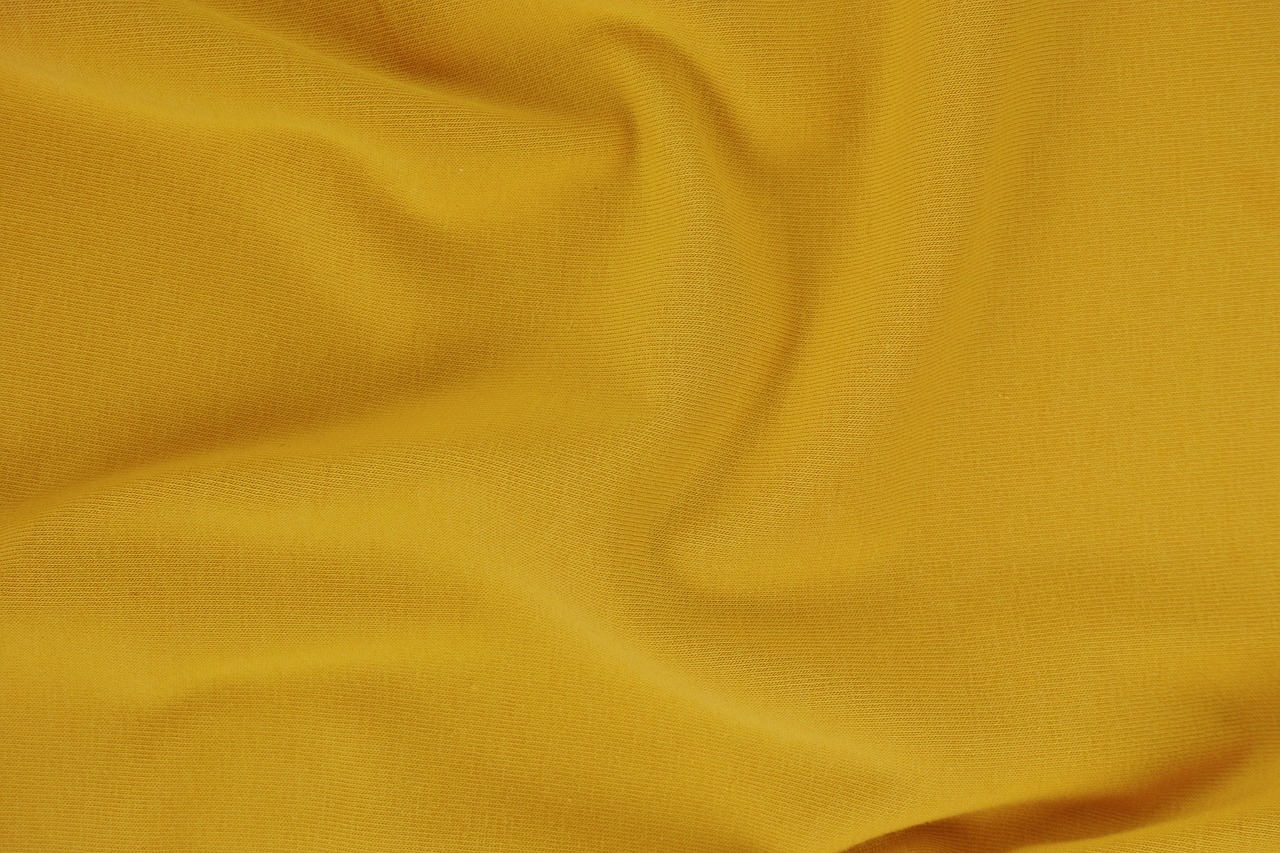
Print vs. Solid Fabrics
When it comes to quilting, one of the most exciting yet challenging decisions you'll face is whether to use print or solid fabrics. Each type has its unique charm and can dramatically affect the overall look and feel of your quilt. So, how do you choose? It's all about understanding what you want your quilt to convey and how you want it to feel.
Print fabrics are like the vibrant stories woven into your quilt. They come in a multitude of patterns, colors, and designs, allowing you to express your creativity in countless ways. Whether you’re drawn to floral patterns, geometric shapes, or whimsical designs, print fabrics can add a layer of depth and interest to your project. They can also help camouflage any imperfections in your sewing, making them a great choice for beginners who are still honing their skills.
On the other hand, solid fabrics provide a clean, modern look that can be incredibly striking. They allow for a more minimalist aesthetic, which can be perfect for showcasing intricate quilting techniques or patterns. If you want your quilt to have a contemporary feel or if you're working on a design that requires a more subdued color palette, solids might be your best bet. Plus, they can serve as a great backdrop for prints, allowing you to create a balanced and harmonious design.
To help you make a more informed decision, consider the following factors:
- Design Intent: What message do you want your quilt to convey? If you're aiming for a playful and vibrant look, prints may be the way to go. For a more sophisticated or classic vibe, solids could be your best choice.
- Color Coordination: How do the colors interact with each other? Prints often contain multiple colors, which can make color matching a bit tricky. Solids can provide a more straightforward approach to color coordination.
- Complexity of the Project: If you're tackling a complex design, using solid fabrics can simplify the process and keep the focus on your quilting techniques. Conversely, prints can add visual interest to simpler designs.
Ultimately, the choice between print and solid fabrics boils down to your personal style and the story you want your quilt to tell. Don't be afraid to experiment! Mixing both prints and solids can lead to stunning results, creating a quilt that is uniquely yours. So grab some swatches, play around with combinations, and let your creativity shine!
- Can I mix print and solid fabrics in one quilt? Absolutely! Combining prints and solids can create a beautiful contrast and add depth to your quilt.
- Which is easier to work with for beginners? Print fabrics can help hide mistakes, while solid fabrics are easier to match and coordinate. It depends on your comfort level.
- How do I choose colors for my fabrics? Consider using a color wheel or exploring color theory to find combinations that work well together.

Tools and Equipment Needed
When it comes to quilting, having the right tools and equipment can make all the difference between a smooth sewing experience and a frustrating one. Imagine trying to bake a cake without measuring cups or a mixer; it’s the same with quilting! To embark on your next quilting adventure, here’s a rundown of essential tools you should consider investing in.
First and foremost, a cutting mat is indispensable. It provides a safe surface for cutting fabric, protecting your work area while prolonging the life of your rotary cutter blades. Speaking of rotary cutters, they are a must-have for clean, precise cuts. Pair this with a ruler—preferably one that’s at least 6 inches wide and 24 inches long—for accurate measurements. These three tools form the holy trinity of quilting preparation!
Next on the list is a sewing machine. While some quilters prefer hand-sewing for the meditative experience it provides, a sewing machine can significantly speed up the process, especially for larger projects. Ensure your machine is equipped with a quarter-inch foot, as this is the standard seam allowance for quilting. If you're new to quilting, don’t hesitate to ask for recommendations at your local fabric store or online quilting communities.
In addition to these basics, consider investing in pins and clips. Pins help keep your fabric layers together as you sew, while clips can be a lifesaver for thicker fabrics or multiple layers. Remember, the right tools not only enhance your efficiency but also improve the quality of your work!
Now, let’s not forget about the importance of a pressing iron. Pressing your seams as you go can make a huge difference in the final appearance of your quilt. A good iron with a steam function can help you achieve crisp seams and flat blocks, making your quilting process more enjoyable. If you’re serious about your craft, consider investing in a ironing board that’s the right height for you to avoid back strain.
Finally, let’s talk about storage solutions. Keeping your fabric and tools organized can save you time and sanity. Consider using storage bins or a dedicated quilting cart to keep everything in one place. This way, you can easily find what you need when inspiration strikes!
In summary, having the right tools and equipment can turn quilting from a daunting task into a delightful hobby. Here’s a quick table summarizing the essential tools:
| Tool | Purpose |
|---|---|
| Cutting Mat | Protects your work surface and prolongs blade life |
| Rotary Cutter | For clean, precise fabric cuts |
| Ruler | Ensures accurate measurements |
| Sewing Machine | Speeds up the sewing process |
| Pins and Clips | Holds fabric layers together while sewing |
| Pressing Iron | Helps achieve crisp seams and flat blocks |
| Storage Solutions | Keeps your materials organized |
With these tools at your disposal, you’ll be well on your way to creating beautiful quilts that you can be proud of. So, gather your supplies, let your creativity flow, and happy quilting!
Q: Do I need an expensive sewing machine to start quilting?
A: Not at all! While a good quality machine can make a difference, many beginners start with a basic sewing machine. Just ensure it has a straight stitch and a quarter-inch foot.
Q: What type of fabric is best for beginners?
A: Cotton fabric is generally the best choice for beginners due to its ease of handling and variety of prints. It’s forgiving and holds its shape well.
Q: How much time should I allocate for a quilting project?
A: This varies greatly depending on the complexity of your project. Simple quilts can take a few hours, while intricate designs may require several days. It’s important to enjoy the process, so don’t rush!
Q: Where can I find quilting patterns?
A: You can find a plethora of patterns online, in quilting magazines, or at your local fabric store. Many quilting communities also share free patterns!
Q: Can I quilt without a dedicated space?
A: Absolutely! Many quilters work on their projects in small spaces. Just be sure to have a portable setup that allows you to easily store and access your materials.

Project Complexity and Time Commitment
Understanding the complexity of a quilting project is essential for ensuring that your creative journey is enjoyable and fulfilling. After all, no one wants to dive into a project only to find themselves overwhelmed and frustrated halfway through. So, how do you gauge the complexity of a quilt? First, consider your current skill level and the techniques required for the project. Some quilts may involve intricate piecing, while others may focus on simple squares or rectangles. By aligning the project with your skills, you can avoid unnecessary stress and enjoy the process.
Next, think about the time commitment involved. Quilting isn't just a quick craft; it can be a time-consuming endeavor that requires careful planning and execution. To help you assess how much time you can realistically dedicate, consider the following factors:
- Your available hours: How much time can you set aside each week for quilting? Be honest with yourself!
- Other commitments: Do you have family, work, or other hobbies that may take up your time?
- The project's size: Larger quilts will naturally take more time than smaller wall hangings or table runners.
Once you've evaluated these aspects, you can choose a project that fits comfortably within your schedule. For instance, if you only have a few hours a week, it might be wise to select a smaller project or one that allows for incremental progress. On the other hand, if you're eager for a challenge and have more time to dedicate, tackling a complex quilt can be incredibly rewarding.
Another effective strategy for managing project complexity is to break down larger tasks into smaller, manageable steps. For example, instead of viewing the quilt as one massive undertaking, consider it in stages:
| Stage | Tasks | Time Estimate |
|---|---|---|
| 1 | Choosing fabrics and planning layout | 2-3 hours |
| 2 | Cutting fabric pieces | 1-2 hours |
| 3 | Sewing quilt top | 4-6 hours |
| 4 | Layering and basting | 2-3 hours |
| 5 | Quilting | 5-10 hours |
| 6 | Binding the quilt | 2-3 hours |
By breaking your project down into stages, you can allocate time more effectively and feel a sense of accomplishment with each completed task. Plus, it makes the whole process feel less daunting and more manageable. Remember, quilting should be a joyful experience, not a chore!
Lastly, don't forget to factor in some flexibility in your schedule. Life can be unpredictable, and it's important to allow yourself the grace to take breaks or extend timelines as needed. After all, the goal is to create something beautiful while enjoying the journey along the way.
1. How do I know if a quilting project is too complex for my skill level?
If you're unsure, start by reading through the project instructions carefully. Look for unfamiliar techniques or complicated patterns. If it feels overwhelming, consider starting with a simpler project first.
2. How can I effectively manage my quilting time?
Creating a schedule can help! Set aside specific blocks of time each week dedicated to quilting. Additionally, breaking the project into smaller tasks can make it easier to fit into your available time.
3. What should I do if I get stuck on a project?
Don’t hesitate to reach out to quilting communities online or in-person. Many quilters are happy to share tips and advice. Sometimes, a fresh perspective can make all the difference!

Time Management Tips
When it comes to quilting, managing your time effectively can be the difference between a delightful hobby and a source of stress. After all, who wants to feel rushed while working on something as creative and personal as a quilt? Here are some practical tips to help you keep your quilting projects on track while still enjoying the process.
First and foremost, set realistic goals. It’s easy to get excited about a new project and overestimate how quickly you can complete it. Take a moment to assess your schedule and determine how much time you can realistically dedicate to quilting each week. This will help you choose a project that fits your lifestyle. For example, if you only have a few hours a week, consider a smaller project or one that can be completed in stages.
Another effective strategy is to create a detailed timeline for your project. Break down your quilting process into manageable steps, such as selecting fabrics, cutting pieces, sewing blocks, and assembling the quilt. By assigning a specific timeframe to each step, you can avoid feeling overwhelmed. Here’s a simple example of how you might structure your timeline:
| Step | Time Frame |
|---|---|
| Choose Fabrics | 1 Day |
| Cut Fabric | 2 Days |
| Sew Blocks | 3 Days |
| Assemble Quilt | 2 Days |
| Quilt and Bind | 4 Days |
Additionally, consider utilizing a timer to keep you focused during your sewing sessions. Setting a timer for a specific period, say 30 to 60 minutes, allows you to immerse yourself in your work without distractions. When the timer goes off, take a short break to stretch and recharge. This technique not only enhances productivity but also helps maintain your enthusiasm for the project.
Lastly, don’t forget the importance of flexibility. Life can be unpredictable, and sometimes your quilting schedule may need to adjust. If you find that a particular step is taking longer than expected, don’t be hard on yourself. Just like a quilt, your time management plan can be pieced together and rearranged as needed. Embrace the process, and remember that every stitch brings you closer to your finished masterpiece.
By implementing these time management tips, you can create a more enjoyable quilting experience. You'll find that with a little planning and flexibility, you can turn your quilting projects into a source of joy rather than a race against time.
- How do I choose the right project for my skill level?
Assess your comfort with various quilting techniques and select a project that challenges you without overwhelming you. - What types of fabric are best for beginners?
Cotton is generally the best choice for beginners due to its ease of handling and availability. - How can I find inspiration for my next quilting project?
Explore online platforms, quilting communities, and magazines for ideas and trends in quilting.
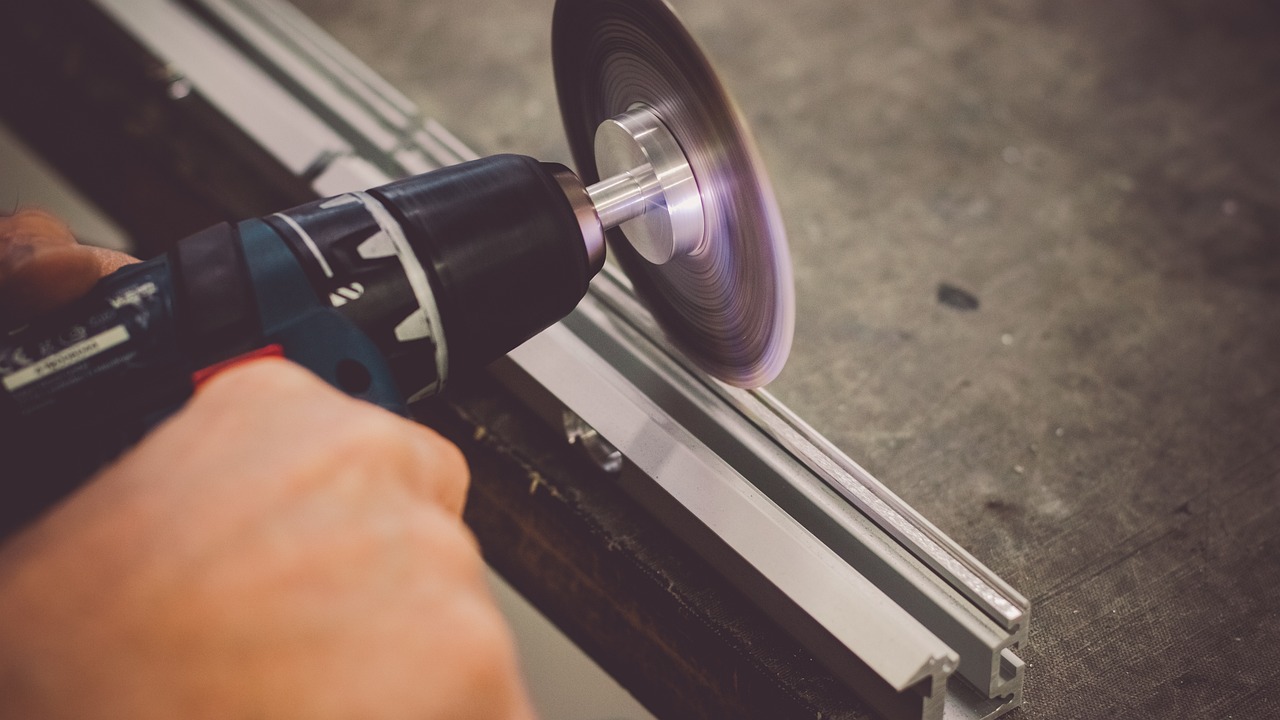
Breaking Down Complex Projects
When it comes to quilting, tackling a complex project can feel a bit like standing at the foot of a mountain, looking up at the peak and wondering how on earth you’ll get there. The key to conquering these daunting tasks lies in breaking them down into manageable steps. Think of it as slicing a large cake into smaller, bite-sized pieces. Each slice represents a step that brings you closer to your finished masterpiece.
First, start by analyzing the project. Take a good look at the pattern or design you’ve chosen. What are the key components? Are there intricate blocks that require special techniques? By identifying these elements, you can create a roadmap that guides your journey. For instance, if your quilt includes several different blocks, consider focusing on one block at a time. This way, you won't feel overwhelmed by the entire project all at once.
Next, set clear goals. Define what you want to achieve with each step. For example, you might set a goal to complete all the cutting in one session, then move on to piecing the blocks in the next. Establishing these mini-milestones not only helps you stay organized but also gives you a sense of accomplishment as you tick each one off your list.
To help visualize this process, consider creating a simple table to track your progress:
| Step | Goal | Status |
|---|---|---|
| 1 | Gather Materials | ✔️ Completed |
| 2 | Cut Fabric | ❌ In Progress |
| 3 | Piece Blocks | ❌ Pending |
| 4 | Assemble Quilt Top | ❌ Pending |
| 5 | Quilt and Bind | ❌ Pending |
Another effective strategy is to set a timeline for each step. This doesn’t have to be rigid, but having a general idea of how long each task should take can help keep you on track. For instance, if you anticipate that cutting fabric will take about two hours, schedule that time into your day, and treat it like an appointment. By doing this, you can prevent procrastination and ensure that you’re making steady progress.
Finally, don’t forget to allow for flexibility. Quilting is an art, and sometimes the best ideas come when you least expect them. If you find that a particular technique is taking longer than anticipated or you’re running into challenges, it’s perfectly okay to adjust your timeline or revisit your goals. The most important thing is to enjoy the process and celebrate each small victory along the way.
In summary, breaking down complex quilting projects into smaller, manageable tasks is essential for a successful and enjoyable experience. By analyzing your project, setting clear goals, tracking your progress, and allowing for flexibility, you can transform what seems like a mountain into a series of achievable steps. Remember, every quilt is a journey, and with each stitch, you’re crafting not just fabric, but also memories and stories that will last a lifetime.
Q: How do I know if a project is too complex for my skill level?
A: Start by assessing the techniques required and compare them to your current skills. If you feel comfortable with most of the techniques, you can likely handle the project with some patience.
Q: What if I get stuck on a particular step?
A: It’s perfectly normal to encounter challenges. Don’t hesitate to seek help from quilting communities, online forums, or instructional videos. Sometimes, a fresh perspective can make all the difference!
Q: How can I stay motivated throughout a complex project?
A: Break your project into smaller tasks and reward yourself for completing each one. This could be as simple as taking a break or treating yourself to a small gift related to your quilting hobby.

Finding Inspiration
Finding inspiration for your next quilting project can feel like searching for a needle in a haystack, especially when you're surrounded by endless possibilities. But fear not! Inspiration can be found in the most unexpected places. Whether you're a seasoned quilter or just starting out, tapping into your creative well is essential for keeping your passion alive. So, where can you find those brilliant ideas that will make your quilting journey exciting and fulfilling?
First off, let's talk about the internet. It's like a giant quilt shop that never closes! You can browse through countless blogs, Pinterest boards, and Instagram feeds dedicated to quilting. These platforms are filled with stunning visuals and innovative designs that can ignite your creativity. For example, Pinterest allows you to create boards where you can save your favorite patterns and color schemes. Just imagine scrolling through a feed bursting with vibrant quilts and unique techniques—it's like a treasure hunt for your next project!
Additionally, quilting communities online can be a goldmine for inspiration. Websites like Quilting Board and Reddit's r/quilting forum are fantastic places to connect with fellow quilters. You can share your work, ask for advice, and even participate in challenges that push your creative boundaries. Engaging with a community not only provides inspiration but also fosters a sense of belonging and support that can be incredibly motivating.
Don’t forget about traditional resources, like quilting books and magazines. There’s something special about flipping through the pages of a beautifully illustrated book or magazine, filled with patterns and tips from quilting experts. Some must-read titles include:
| Title | Author |
|---|---|
| The Quilter's Bible | Linda Clements |
| Quilt As-You-Go Made Modern | Jera Brandvig |
| Modern Quilt Magic | Victoria Findlay Wolfe |
These books not only provide patterns but also delve into techniques and color theory that can help refine your skills. They can be a source of inspiration that encourages you to try something new or revisit an old favorite with a fresh perspective.
Lastly, consider nature and your surroundings as a rich source of inspiration. The colors of the changing seasons, the textures of tree bark, or even the patterns found in flowers can all translate beautifully into quilting designs. Next time you're out for a walk, take a moment to observe the world around you. You might find that the vibrant colors of autumn leaves inspire a warm, cozy quilt, or the delicate patterns in a butterfly's wings could lead to a stunning fabric choice.
In conclusion, inspiration for your quilting projects is everywhere if you know where to look. From online resources and community engagement to traditional books and the beauty of nature, the possibilities are endless. So, keep your eyes open and your creativity flowing; your next quilting masterpiece is just around the corner!
- Where can I find quilt patterns online? You can find quilt patterns on websites like Craftsy, Etsy, and Pinterest, where many quilters share their designs.
- What are some good quilting magazines? Popular quilting magazines include Quiltmaker, American Patchwork & Quilting, and Quilt Folk.
- How can I connect with other quilters? Consider joining online forums, social media groups, or local quilting clubs to connect with fellow enthusiasts.
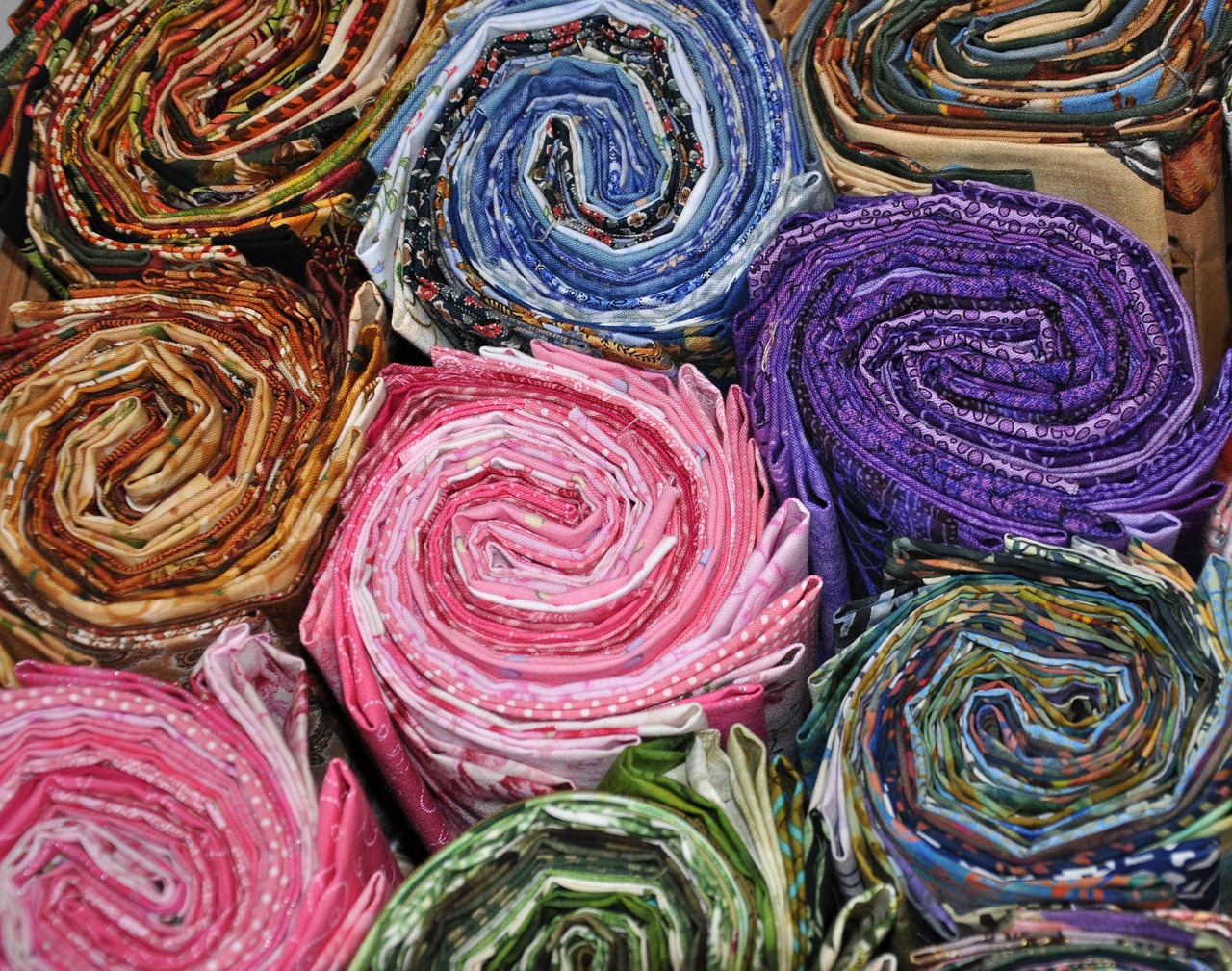
Online Resources and Communities
In the digital age, finding inspiration for your next quilting project has never been easier. The internet is brimming with online resources and vibrant communities that cater to quilters of all skill levels. Whether you’re a novice looking to learn the ropes or an experienced quilter seeking fresh ideas, these platforms can be invaluable. You can explore social media groups, dedicated quilting websites, and forums where enthusiasts share their work, tips, and techniques.
One of the best places to start is on social media platforms. Sites like Instagram and Pinterest are visual treasure troves where quilters showcase their creations. You can follow hashtags like #quilting or #quiltsofinstagram to discover stunning quilts and innovative techniques. Additionally, Facebook groups dedicated to quilting often foster a sense of community, allowing you to connect with fellow quilters, ask questions, and share your progress.
Beyond social media, there are numerous websites specifically tailored for quilters. Websites like Quilting Daily and The Quilt Show offer tutorials, patterns, and even video lessons that can help you enhance your skills. These resources often feature expert quilters who share their insights, making it easier for you to learn new techniques and find inspiration for your next project.
Don’t overlook the power of forums and online communities. Websites like Quilters Club of America and Reddit's Quilting Community provide spaces where you can engage in discussions, seek advice, and share your work. These platforms are not only great for learning but also for building friendships with others who share your passion for quilting.
Furthermore, many quilters find great value in blogs dedicated to quilting. These blogs often feature personal stories, project ideas, and detailed tutorials that can guide you through complex quilts. For instance, blogs like Cluck Cluck Sew and Freshly Pieced are popular among quilters for their engaging content and practical advice. They can serve as a wonderful source of inspiration and a way to connect with the quilting community.
As you explore these online resources, remember to take part in the conversations. Engaging with other quilters can lead to new friendships and collaborations. So, whether you’re sharing your latest quilt or seeking advice on a tricky technique, don’t hesitate to dive into the vibrant world of online quilting communities!
Q: What are some good online platforms for finding quilting inspiration?
A: Social media platforms such as Instagram and Pinterest are excellent for visual inspiration. Additionally, websites like Quilting Daily and The Quilt Show offer tutorials and patterns that can spark your creativity.
Q: How can I connect with other quilters online?
A: Joining Facebook groups, participating in forums like Quilters Club of America, or engaging in subreddits dedicated to quilting on Reddit are great ways to connect with fellow quilting enthusiasts.
Q: Are there any quilting blogs that you recommend?
A: Yes! Blogs like Cluck Cluck Sew and Freshly Pieced are popular among quilters for their engaging content and helpful tutorials.

Quilting Books and Magazines
When it comes to finding inspiration and honing your quilting skills, books and magazines can be invaluable resources. They not only provide a wealth of information but also showcase stunning projects that can ignite your creativity. Imagine flipping through the pages of a beautifully illustrated quilting book, each turn revealing vibrant fabrics and intricate designs that spark your imagination. Isn’t that a delightful thought?
One of the best aspects of quilting literature is the variety it offers. From beginner guides that break down the basics to advanced texts that explore complex techniques, there's something for everyone. For instance, you might find a book dedicated solely to modern quilting techniques, while another focuses on traditional patterns. This diversity allows you to choose resources that align with your current skill level and interests.
Here are a few popular quilting books that many enthusiasts recommend:
- The Quilter's Bible by Linda C. Franz - A comprehensive guide covering various techniques and styles.
- Quilt As-You-Go Made Modern by Jera Brandvig - Perfect for those looking to combine traditional quilting with modern efficiency.
- Patchwork Style by Suzuko Koseki - A beautiful exploration of patchwork with stunning photography that inspires.
Magazines also play a crucial role in the quilting community. They often feature the latest trends, patterns, and tips from seasoned quilters. Subscribing to a quilting magazine can keep you updated on new techniques, fabric releases, and quilting events in your area. Some popular quilting magazines include:
- Quiltmaker - Offers a mix of patterns, tips, and inspiring stories from quilters around the world.
- American Patchwork & Quilting - Known for its beautiful projects and helpful advice for quilters of all levels.
- Quilt Now - A modern magazine filled with fresh ideas and patterns that cater to contemporary quilters.
Additionally, many books and magazines come with accompanying online resources. This could include downloadable patterns, video tutorials, or even access to exclusive online communities. Engaging with these resources can enhance your learning experience and connect you with fellow quilting enthusiasts. Imagine sharing your progress on a project you found in a magazine and receiving encouragement from a community that understands your passion!
In conclusion, diving into quilting books and magazines can be a game-changer for your quilting journey. They not only provide practical advice and beautiful patterns but also foster a sense of community and inspiration. So, grab a cozy blanket, a cup of tea, and immerse yourself in the wonderful world of quilting literature. You never know what project might catch your eye next!
Q: What are some beginner-friendly quilting books?
A: Some great options include "The Complete Beginner's Guide to Quilting" by Linda C. Franz and "Quilting for the Absolute Beginner" by A. J. G. M. These books provide clear instructions and simple patterns to get you started.
Q: How often should I read quilting magazines?
A: It's entirely up to your personal preference! Some quilters enjoy reading every issue for fresh ideas, while others may browse them occasionally for inspiration. Consider subscribing to a few to see what works best for you!
Q: Can I find free quilting patterns online?
A: Absolutely! Many websites and blogs offer free quilting patterns and tutorials. Just be sure to check the credibility of the source to ensure the patterns are high quality.
Frequently Asked Questions
- What skill level should I consider for my quilting project?
Choosing the right skill level is crucial! If you're a beginner, start with simple patterns and techniques. Intermediate quilters can explore more complex designs, while advanced quilters might want to challenge themselves with intricate patterns or new techniques.
- How do I choose the right fabric for my quilt?
Fabric selection can make or break your quilt! Look for cotton fabric for its durability and ease of use. Consider flannel for warmth and softness, or specialty fabrics for unique textures. Always think about how the fabric type complements your design and personal style.
- What are some tips for managing my quilting time effectively?
Time management is key to enjoying your quilting journey! Set aside dedicated sewing time each week, and break your project into smaller tasks. This way, you won't feel overwhelmed, and you'll make steady progress without rushing.
- Where can I find inspiration for my next quilting project?
Inspiration is everywhere! Check out online platforms like Pinterest and Instagram for fresh ideas. Join quilting communities and forums to see what others are creating. Don't forget about books and magazines, which can offer techniques and patterns to spark your creativity!
- Should I use prints or solid fabrics in my quilt?
It depends on the look you're going for! Solid fabrics can provide a clean, modern aesthetic, while prints can add fun and personality. Consider mixing both for a dynamic effect, but be mindful of balancing them to avoid overwhelming your design.
- What essential tools do I need for quilting?
Having the right tools makes all the difference! Essential items include a rotary cutter, cutting mat, quilting ruler, and a good sewing machine. Don't forget about pins, thread, and an iron to keep everything neat and tidy!
- How do I break down complex quilting projects?
Complex projects can seem intimidating, but breaking them down into smaller steps makes it manageable! Start by outlining the main components, then tackle each part one at a time. This approach can turn a daunting project into a fun and enjoyable experience!



















